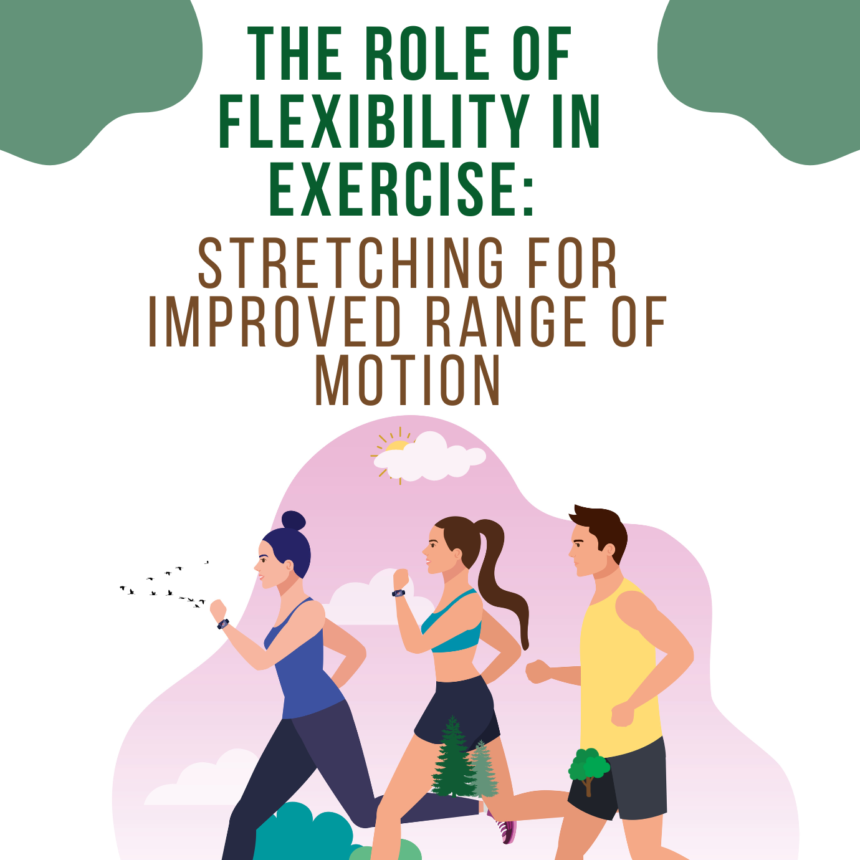Flexibility plays a crucial role in exercise and overall physical well-being. It refers to the ability of your joints and muscles to move through their full range of motion. Incorporating flexibility exercises, such as stretching, into your fitness routine offers numerous benefits. Let’s explore the role of flexibility in exercise and how stretching can improve your range of motion:
1. Improved Range of Motion: Regular flexibility exercises can enhance your range of motion, allowing you to move more freely and perform exercises with greater ease. Improved flexibility enables you to perform activities of daily living more efficiently and reduces the risk of muscle strains or joint injuries during physical activities.
2. Enhanced Athletic Performance: Flexibility is important for athletes and individuals engaged in sports or physical activities. It allows for greater efficiency of movement, which can lead to improved performance in activities that require agility, speed, and coordination. For example, a dancer with good flexibility can achieve more extensive and controlled movements.
3. Injury Prevention: Maintaining good flexibility can help prevent injuries by allowing your muscles and joints to move properly. When muscles are flexible, they can absorb impact and stress better, reducing the risk of strains or tears. Flexible joints are also less prone to overuse injuries.
4. Post-Workout Recovery: Stretching after a workout helps relax the muscles and promotes blood flow to aid in recovery. It can reduce muscle soreness, alleviate tension, and promote faster recovery from intense exercise sessions.
5. Improved Posture and Alignment: Flexibility exercises, particularly those targeting muscles responsible for posture, can help improve alignment and reduce muscle imbalances. Stretching tight muscles that pull on certain areas of the body can alleviate postural issues and reduce the risk of associated discomfort.
6. Relaxed Muscles and Reduced Muscle Tension: Stretching can help relax tense muscles, alleviate muscle tightness, and reduce muscle tension caused by stress or prolonged periods of sitting or physical activity. It promotes a feeling of relaxation and can contribute to overall stress reduction.
7. Increased Body Awareness: Flexibility exercises require you to pay attention to your body and focus on the sensation of stretching. This increased body awareness can help you identify areas of tightness or imbalance, allowing you to address them and improve your overall physical well-being.
8. Considerations and Safety: When incorporating flexibility exercises into your routine, it’s important to follow some guidelines for safe stretching:
- Warm up your muscles with light aerobic activity before stretching.
- Perform dynamic stretching before a workout to prepare your muscles for movement.
- Focus on major muscle groups and areas that are prone to tightness.
- Stretch to the point of mild discomfort, not pain. Avoid bouncing or jerking movements.
- Breathe deeply and relax into each stretch, maintaining good posture.
- Hold each stretch for 15-30 seconds and repeat 2-4 times.
- Stretch both sides of your body evenly.
- Incorporate flexibility exercises into your routine at least 2-3 times per week.
9. Variety and Balance: Incorporate a variety of stretching techniques into your routine, including static stretching, dynamic stretching, and proprioceptive neuromuscular facilitation (PNF) stretching. Focus on achieving balance throughout your body by stretching opposing muscle groups.
10. Mind-Body Connection: Stretching provides an opportunity to connect with your body, focus on your breath, and promote relaxation. It can serve as a mindful practice that helps reduce stress and promote overall well-being.
Remember that everyone’s flexibility levels are different, and progress may take time. Be patient and consistent with your stretching routine, and avoid pushing your body beyond its limits. If you have specific flexibility goals or concerns, consider working with a qualified fitness professional who can guide you in developing a safe and effective stretching program.
By incorporating flexibility exercises into your fitness routine, you can improve your range of motion, prevent injuries, enhance athletic performance, and promote overall physical well-being.
